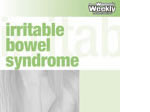There is only one accurate way to diagnose food intolerance and that is to follow an elimination diet.
Uninformed practitioners sometimes suggest the methods described below. However, these are a complete waste of time and money, yielding inaccurate and misleading. They are listed here only by way of warning.
Live blood tests
A small sample of blood is taken, sometimes from a pinprick in the finger. The patient may be invited to look through a microscope, and be shown what is said to be his or her white blood cells “attacking” a foreign substance, supposedly indicating intolerance to whatever that substance is.
This method is also claimed to diagnose systemic candida. It is absolutely unreliable.
Hair samples
A small hair sample is analysed, allegedly to identify food responsible for symptoms. This test also has no scientific basis whatsoever.
Skin prick testing
Tiny amounts of proteins extracted from certain foods are injected into the skin. If redness develops at the injection site, it’s said to indicate food intolerance.
While skin tests can sometimes be very useful for discovering the cause of allergic reactions, this is not the case for food intolerances.
No doubt there are other way-out methods of diagnosing food intolerance that will be offered to the unwary.
As said, the only reliable method is an elimination diet.




